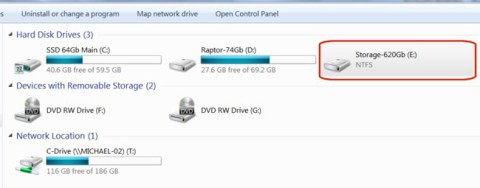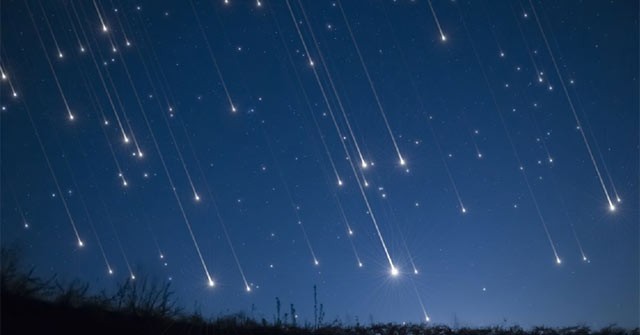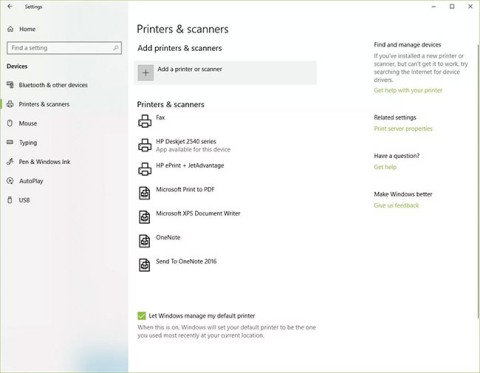How to regain access to hard drive, fix error of not being able to open hard drive

In this article, we will guide you how to regain access to your hard drive when it fails. Let's follow along!
What is a meteor? Why does a meteor occur? Let's find out together!
As a comet passes close to the Sun, it heats up and some of the comet vaporizes. After the comet has circled the Sun many times, many small pieces of the comet are left behind along the comet's path. Meteor showers occur when Earth passes through the comet's path. When this happens, fragments of the comet, most of which are no larger than a grain of sand, create bright streaks of light in the night sky as they burn up in Earth's atmosphere. The fragments that enter Earth's atmosphere are called meteors. On any given night, a few small meteors shooting across the sky are likely to occur. However, during a meteor shower, dozens to hundreds of meteors can be seen per hour. Many of these meteor showers can be predicted and occur at the same time each year.
Let's find out more details and why there are shooting stars!
Why are there shooting stars?
When moving at a speed of about 100,000km/h, the air molecules in the path of the meteorite are heated by the shock wave, or compressed so strongly that the temperature of the shock wave increases to thousands of degrees and causes the material components of the meteorite to become incandescent.

In fact, comets are the cause of meteor showers. Comets are celestial bodies orbiting the Sun made of ice, dust, and rock. When moving close to the Sun, comets break up, creating dust trails in their orbit.
If comets pass through or are near the Earth's orbit, and the Earth moves close to that intersection, the comet's dust and gas will be thrown into the atmosphere, causing a lot of shooting stars. At that time, they are called Meteor Showers.
The nodes are defined on the path of the Earth and each year the Earth will pass through the nodes at a certain time. Therefore, meteor showers have a cycle of 1 year.
Famous Meteor Showers
The peak times of meteor showers change every year. Only when the shower is near do we know the exact times.

How to watch meteor shower
To see a perfect meteor shower, you must determine the direction of the constellations.
Wherever you can see those constellations, you can see meteor showers, so we have to determine the direction of the constellations to be able to see a perfect meteor shower.
The closer a place is to the equator, the easier it is to observe meteor showers. Fortunately, Vietnam is located near the equator, so it is quite convenient to observe meteor showers.
What is the difference between meteor, shooting star and meteorite?
Meteorites : These rocks are still in space. Meteorites range in size from dust grains to small asteroids.
Meteor : When meteors enter the Earth's atmosphere (or that of another planet, such as Mars) at high speed and burn up, the resulting fireballs or "shooting stars" are called meteors.
Meteorite : When a meteorite survives the trip through the atmosphere and hits the ground, it is called a meteorite.
In this article, we will guide you how to regain access to your hard drive when it fails. Let's follow along!
Dental floss is a common tool for cleaning teeth, however, not everyone knows how to use it properly. Below are instructions on how to use dental floss to clean teeth effectively.
Building muscle takes time and the right training, but its something anyone can do. Heres how to build muscle, according to experts.
In addition to regular exercise and not smoking, diet is one of the best ways to protect your heart. Here are the best diets for heart health.
The third trimester is often the most difficult time to sleep during pregnancy. Here are some ways to treat insomnia in the third trimester.
There are many ways to lose weight without changing anything in your diet. Here are some scientifically proven automatic weight loss or calorie-burning methods that anyone can use.
Apple has introduced iOS 26 – a major update with a brand new frosted glass design, smarter experiences, and improvements to familiar apps.
Yoga can provide many health benefits, including better sleep. Because yoga can be relaxing and restorative, its a great way to beat insomnia after a busy day.
The flower of the other shore is a unique flower, carrying many unique meanings. So what is the flower of the other shore, is the flower of the other shore real, what is the meaning and legend of the flower of the other shore?
Craving for snacks but afraid of gaining weight? Dont worry, lets explore together many types of weight loss snacks that are high in fiber, low in calories without making you try to starve yourself.
Prioritizing a consistent sleep schedule and evening routine can help improve the quality of your sleep. Heres what you need to know to stop tossing and turning at night.
Adding a printer to Windows 10 is simple, although the process for wired devices will be different than for wireless devices.
Diet is important to our health. Yet most of our meals are lacking in these six important nutrients.
You want to have a beautiful, shiny, healthy nail quickly. The simple tips for beautiful nails below will be useful for you.
Students need a specific type of laptop for their studies. It should not only be powerful enough to perform well in their chosen major, but also compact and light enough to carry around all day.













